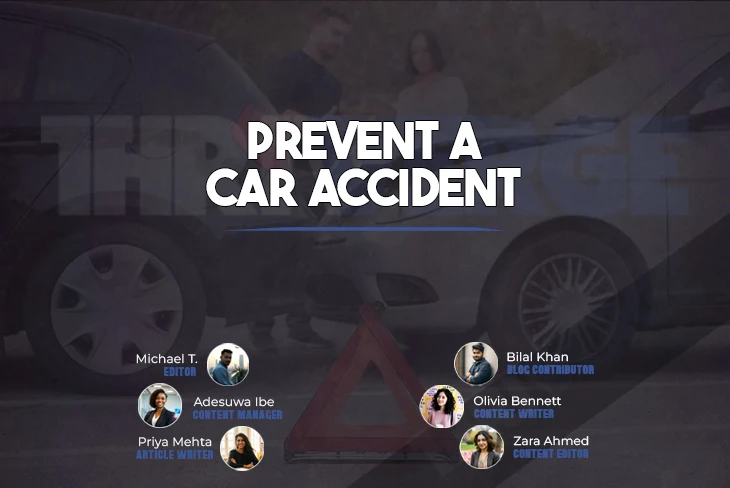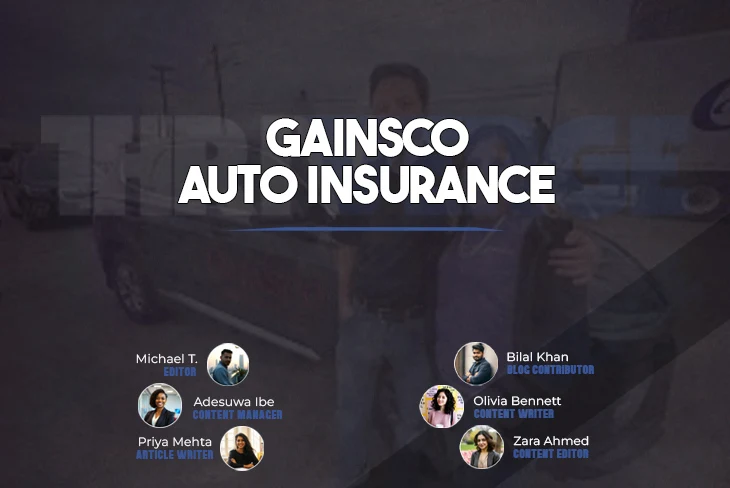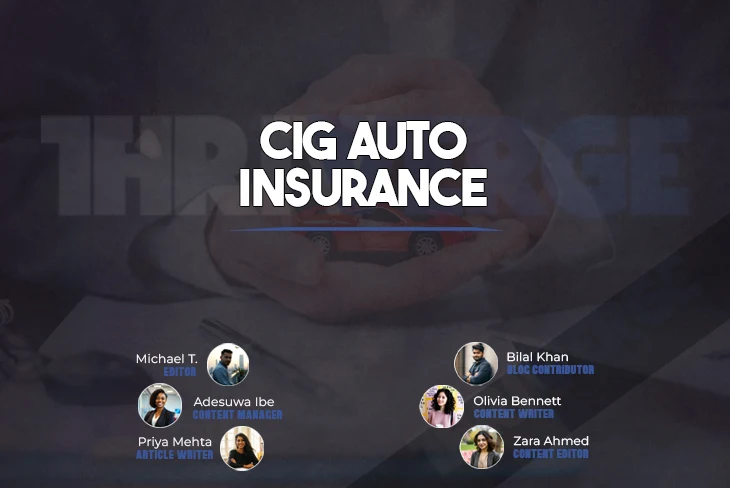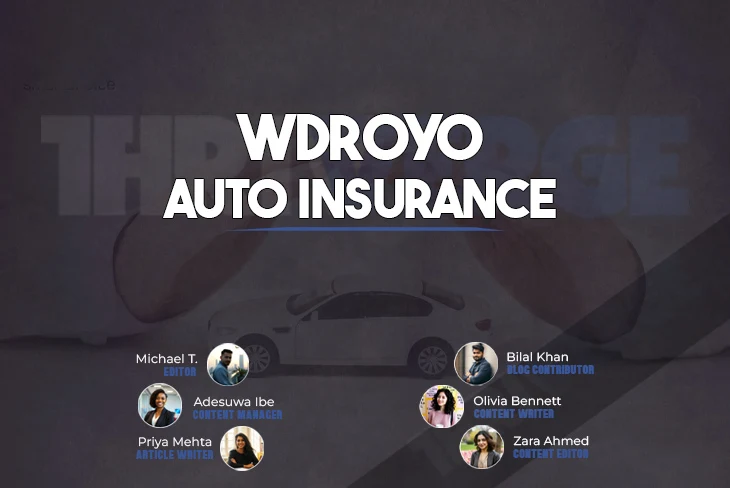
Did you know that over 1.3 million people die in road crashes each year? That’s a staggering 3,700 lives lost daily. But here’s the kicker: most of these accidents are preventable. Imagine if we could save even half of those lives by following some simple safety measures. That’s where our “20 Ways to Prevent Car Accidents” comes in. It’s not just about being a good driver; it’s about being a smart, aware, and prepared one. From avoiding distractions to mastering defensive driving techniques, these tips could be the difference between a close call and a catastrophe.
So, buckle up (literally and figuratively) as we dive into this life-saving guide. After all, the most important trip you’ll ever take is the one that brings you home safely.
1. Avoid Distracted Driving
Distracted driving is like trying to juggle while riding a unicycle – it’s a recipe for disaster. In today’s world, our phones are often the biggest culprits. But it’s not just about texting; eating, applying makeup, or even daydreaming can take your focus off the road.
Here’s the deal: when you’re behind the wheel, your only job is to drive. That means putting your phone on silent or using a do-not-disturb mode. If you absolutely must take a call, pull over safely first. Remember, that text or call can wait, but accidents happen in the blink of an eye.
Consider this: at 55 mph, taking your eyes off the road for just 5 seconds is like driving the length of a football field with your eyes closed. Scary, right? So, keep your eyes on the road, your hands on the wheel, and your mind on driving. It’s as simple as that.
For more information on different types of road accidents, including those caused by distraction, check out this comprehensive guide on types of road accidents.
2. Obey Speed Limits
Speed limits aren’t just suggestions; they’re there for a reason. Think of them as your road guardian angels, keeping you and others safe. Speeding is like playing Russian roulette with your life and the lives of others on the road.
When you’re zooming down the highway, your reaction time shrinks faster than a wool sweater in hot water. You’ve got less time to spot hazards, less time to brake, and less control over your vehicle. Plus, if you do crash, the impact is much more severe at higher speeds.
But it’s not just about following the posted limits. Sometimes, even the speed limit is too fast. In bad weather, heavy traffic, or unfamiliar roads, it’s smart to slow down even more. Remember, arriving alive is way more important than arriving on time.
3. Never Drive Under the Influence
Driving under the influence is like trying to thread a needle while wearing boxing gloves – it’s a disaster waiting to happen. Alcohol and drugs mess with your judgment, slow your reflexes and impair your vision. It’s a triple threat to road safety.
Here’s a sobering thought: even one drink can affect your driving. And don’t fall for the myth that coffee or a cold shower can sober you up quickly. The only cure for intoxication is time.
If you’re planning to drink, plan. Designate a sober driver, call a taxi, or use a ride-sharing service. It’s not just about you; it’s about everyone else on the road too. No drink is worth risking a life.
4. Practice Defensive Driving
Defensive driving is like having a superpower on the road. It’s all about anticipating potential hazards and being ready to react. Think of it as playing chess, where you’re always thinking several moves ahead.
First off, always be aware of your surroundings. Check your mirrors regularly, keep an eye on the cars around you, and look far ahead down the road. This gives you more time to spot and react to potential dangers.
Another key aspect is maintaining a “cushion of safety” around your vehicle. This means keeping a safe distance from the car in front of you and being aware of your escape routes in case of an emergency. Remember, it’s better to be the driver who prevents accidents than the one who causes them.
5. Be Cautious in Adverse Weather
When Mother Nature throws a tantrum, driving can get tricky. Rain, snow, fog, and ice can turn a simple commute into a white-knuckle adventure. But with the right approach, you can navigate these challenges safely.
In wet conditions, slow down and increase your following distance. Water on the road can cause hydroplaning, where your tires lose contact with the road surface. If this happens, don’t panic or brake suddenly. Instead, ease off the gas and steer straight until you regain traction.
Snow and ice require even more caution. Accelerate and decelerate slowly to maintain traction. And remember, bridges and overpasses freeze before regular roads, so be extra careful on these.
Fog can be particularly deceptive. Use your low beams (high beams can reflect off the fog and reduce visibility), and if visibility is severely reduced, pull over to a safe spot and wait it out. After all, it’s better to be late than to never arrive at all.
6. Follow Traffic Signals
Traffic signals are the unsung heroes of road safety. Those red, yellow, and green lights are like the conductors of a massive, complex orchestra of vehicles. Ignoring them is like a violinist deciding to play a solo during a symphony – it throws everything into chaos.
First things first: red means stop. Always. Even if you’re in a hurry, even if it’s the middle of the night and you can’t see any other cars. Running a red light is like playing Russian roulette with your life and the lives of others.
Yellow doesn’t mean “floor it to beat the red.” It means preparing to stop. If you can safely stop before the intersection, do it. If you’re too close to stop safely when the light turns yellow, proceed with caution.
And green doesn’t mean “go without looking.” Always take a second to check that the intersection is clear before proceeding. Remember, not everyone follows the rules as diligently as you do.
7. Maintain a Safe Following Distance
Tailgating is like trying to squeeze into jeans that are two sizes too small – it’s uncomfortable, and dangerous, and nobody likes it. Keeping a safe following distance is crucial for preventing rear-end collisions, which are among the most common types of accidents.
The general rule is the “three-second rule.” Here’s how it works: pick a fixed point ahead, like a road sign. When the car in front of you passes that point, start counting: “One Mississippi, Two Mississippi, Three Mississippi.” If you reach the same point before you finish counting, you’re following too closely.
In bad weather or poor road conditions, increase this to four or even five seconds. Remember, the faster you’re going, the more distance you need to stop safely. It’s simple physics, folks.
And here’s a bonus tip: if someone’s tailgating you, don’t get annoyed or try to “teach them a lesson.” Instead, safely change lanes or pull over when you can to let them pass. It’s better to let an aggressive driver go ahead than to risk an accident.
8. Stay Alert and Rested
Driving while drowsy is like trying to read a book with your eyes closed – it just doesn’t work. Fatigue slows your reaction time, impairs your judgment, and can even lead to microsleeps, where you nod off for a few seconds without realizing it.
Here’s a scary fact: being awake for 18 hours straight can impair your driving as much as having a blood alcohol level of 0.05%. That’s like having a couple of beers before hitting the road.
So, what can you do? First, make sure you’re well-rested before a long drive. If you start feeling drowsy, don’t try to push through it. Take a break, have a coffee, or even take a short nap. It’s better to arrive late than not at all.
And remember, certain times of day are riskier for drowsy driving. Late night and early morning hours, as well as mid-afternoon, are when our bodies naturally feel sleepier. If you can, try to avoid driving during these times on long trips.
9. Use Turn Signals
Turn signals are like mind-reading devices for other drivers. They’re your way of saying, “Hey, I’m about to do this thing, so be ready!” Not using them is like trying to play charades on the highway – confusing and potentially dangerous.
Using your turn signals isn’t just polite; it’s crucial for preventing accidents. It gives other drivers time to adjust their speed or position, reducing the risk of collisions during lane changes or turns.
And here’s the thing: use your signals even when you don’t see other cars around. You never know if there’s a vehicle in your blind spot or a pedestrian about to cross the street. It’s a simple habit that can make a big difference in road safety.
Remember, your turn signal isn’t a magical force field that makes it safe to change lanes or turn. Always check your mirrors and blind spots before making your move. The signal is just the first step in a safe maneuver.
10. Regular Vehicle Maintenance
Think of your car like your body – it needs regular check-ups to stay healthy and function properly. Skipping maintenance is like ignoring a weird pain in your side – it might be fine, but it could also be a sign of something serious.
Regular oil changes, tire rotations, and brake checks aren’t just good for your car’s longevity; they’re crucial for safety. Bald tires can lead to hydroplaning in wet conditions, worn brakes can increase stopping distance, and engine problems can leave you stranded in dangerous situations.
Don’t ignore those warning lights on your dashboard. They’re your car’s way of saying, “Hey, I need some attention here!” Addressing issues early can prevent more serious problems down the road.
And here’s a pro tip: keep a log of your maintenance. It’ll help you stay on top of regular services and can even boost your car’s resale value. Plus, it’s satisfying to see a record of how well you’ve cared for your vehicle.
For more information on how proper vehicle maintenance can affect your auto insurance, check out this guide on auto insurance.
11. Be Mindful of Blind Spots
Blind spots are like the boogeyman of driving – you can’t see them, but they can cause real trouble. Every vehicle has them, those areas around your car that you can’t see in your mirrors. Ignoring them is like walking around with blinders on.
First, adjust your mirrors properly. Your side mirrors should be angled out more than you might think. You shouldn’t be able to see the side of your car in them. This helps reduce blind spots.
Even with properly adjusted mirrors, always do a quick shoulder check before changing lanes. It takes just a second and can prevent a nasty surprise.
And remember, if you can’t see a truck’s mirrors, the truck driver can’t see you. Give large vehicles extra space and never linger in their blind spots.
12. Avoid Aggressive Driving
Road rage is like a contagious disease on the highway – it spreads quickly and makes everyone’s journey miserable. Aggressive driving isn’t just stressful; it’s dangerous.
Tailgating, excessive speeding, weaving through traffic – these behaviors might seem like they’re getting you to your destination faster, but they’re increasing your risk of an accident.
If someone cuts you off or drives aggressively, don’t engage. Take a deep breath, let it go, and focus on your safe driving. Remember, you can’t control other drivers, but you can control your reaction to them.
And if you find yourself getting frustrated often, consider leaving earlier for your trips. Having a time buffer can reduce stress and the temptation to drive aggressively.
13. Be Extra Cautious with New Drivers
New drivers are like baby deer on the road – a bit wobbly and unpredictable. If you spot a car with a “Student Driver” sign or notice hesitant driving behavior, give them extra space and patience.
Remember, everyone was a new driver once. These folks are still learning the ropes, and your understanding can make a big difference in their confidence and safety.
If you’re a parent or mentor to a new driver, lead by example. Show them good driving habits and explain why you make certain decisions on the road. Your guidance can shape their driving behavior for years to come.
And for the new drivers out there: don’t be afraid to use those “New Driver” signs. They signal to other drivers to give you a bit more space and understanding as you gain experience.
14. Use Headlights Appropriately
Headlights aren’t just for nighttime driving. They’re like your car’s way of waving hello to other drivers, saying, “Hey, I’m here!” Use them in low visibility conditions like rain, fog, or at dawn and dusk.
But here’s the catch: high beams can be blinding to oncoming traffic. Use them on dark, rural roads, but switch to low beams when you see another vehicle approaching.
And don’t forget about your tail lights. They’re just as important for the drivers behind you. Make sure all your lights are working properly – it’s an easy check that can make a big difference in your visibility on the road.
15. Prepare for Night Driving
Driving at night is like trying to navigate with one eye closed – it’s doable, but it’s more challenging. Your depth perception, color recognition, and peripheral vision are all reduced in the dark.
First, make sure your headlights are clean and properly aimed. Dirty or misaligned headlights can significantly reduce your visibility.
Reduce your speed at night and increase your following distance. It takes longer to recognize and react to hazards in the dark.
If you wear glasses, consider getting an anti-reflective coating. It can help reduce glare from oncoming headlights.
And here’s a pro tip: if an oncoming vehicle’s high beams are blinding you, look toward the right side of the road instead of directly at the lights. This helps you stay oriented without being dazzled.
16. Be Aware of Road Conditions
Road conditions can change faster than a chameleon’s colors. Construction zones, potholes, wet leaves – all these can turn a smooth drive into a tricky situation.
Always be on the lookout for road signs warning of upcoming hazards or changes in road conditions. Slow down in construction zones – not just for your safety, but for the workers’ safety too.
In wet conditions, be wary of puddles. They might look shallow, but they could be hiding deep potholes. And in autumn, watch out for wet leaves on the road – they can be as slippery as ice.
Remember, the posted speed limit is for ideal conditions. If the road is wet, icy, or under construction, slow down accordingly. It’s better to arrive a few minutes late than not arrive at all.
17. Watch for Animal Crossings
Encountering wildlife on the road is like playing a real-life version of the classic arcade game Frogger – except it’s not fun, and the stakes are much higher. Animal crossings can lead to serious accidents, especially in rural areas or during dawn and dusk when many animals are most active.
Keep an eye out for animal crossing signs and be extra vigilant in these areas. Remember, where there’s one animal, there are often more nearby. If you see one deer cross the road, be prepared for others to follow.
If an animal suddenly appears in front of your vehicle, resist the urge to swerve. Swerving can cause you to lose control of your car or veer into oncoming traffic. Instead, brake firmly and stay in your lane.
And here’s a tip: use your high beams when driving on dark, rural roads (when there’s no oncoming traffic). This will help you spot animals’ eyes reflecting in the light from further away, giving you more time to react.
18. Avoid Driving When Tired
Driving when you’re tired is like trying to thread a needle while yawning – it’s a recipe for disaster. Fatigue can impair your driving ability as much as alcohol, slowing your reaction times and clouding your judgment.
Learn to recognize the signs of fatigue: heavy eyelids, frequent yawning, drifting from your lane, or not remembering the last few miles you’ve driven. If you notice these signs, it’s time to take a break.
On long trips, plan for regular stops – at least every two hours or 100 miles. Use these breaks to stretch your legs, get some fresh air, or even take a short nap if needed.
And here’s a pro tip: if you’re on a road trip, consider sharing driving duties with a passenger. Switching drivers every few hours can help ensure everyone stays fresh and alert.
19. Plan Your Route
Planning your route is like giving yourself a roadmap to success – literally. It helps reduce stress, minimize distractions, and can even save you time and fuel.
Before setting out, especially for unfamiliar destinations, take a few minutes to review your route. If you’re using a GPS, set it up before you start driving to avoid fiddling with it on the road.
Consider factors like traffic patterns, construction zones, and potential rest stops. Knowing where you might encounter delays can help you plan accordingly and reduce the temptation to speed or drive aggressively.
Remember, unexpected detours can happen. Keep a physical map or offline GPS as a backup in case your primary navigation system fails. It’s always good to have a Plan B.
20. Keep Emergency Items in Your Vehicle
Keeping emergency items in your car is like having a safety net when you’re walking a tightrope. You hope you never need it, but you’re sure glad it’s there if you do.
Start with the basics: a first-aid kit, a flashlight, and basic tools like a jack and lug wrench. Add some jumper cables, a blanket, and non-perishable snacks. In winter, throw in an ice scraper and some sand or kitty litter for traction if you get stuck.
Don’t forget to keep your phone charger in the car. A dead phone in an emergency is the last thing you want.
And here’s a tip: check your emergency kit regularly. Replace expired items and make sure everything’s in working order. It’s no good having a flashlight with dead batteries when you need it most.
Conclusion
Preventing car accidents isn’t rocket science, but it does require constant attention and good habits. These 20 ways to prevent a car accident are your toolkit for safer driving. From avoiding distractions to preparing for emergencies, each tip plays a crucial role in keeping you and others safe on the road.
Remember, safe driving isn’t just about following rules; it’s about being aware, prepared, and responsible. It’s about making smart choices every time you get behind the wheel. Whether you’re a new driver or have been on the road for decades, there’s always room to improve your driving habits.
Think of these tips as your personal road safety checklist. Maybe print them out and keep them in your car as a reminder. Share them with your friends and family, especially new drivers. After all, road safety is a community effort.
By following these guidelines, you’re not just protecting yourself; you’re contributing to safer roads for everyone. And that’s something we can all get behind.
So, the next time you start your engine, take a moment to remind yourself of these safety tips. They might just save a life – maybe even your own. Safe travels, everyone!









